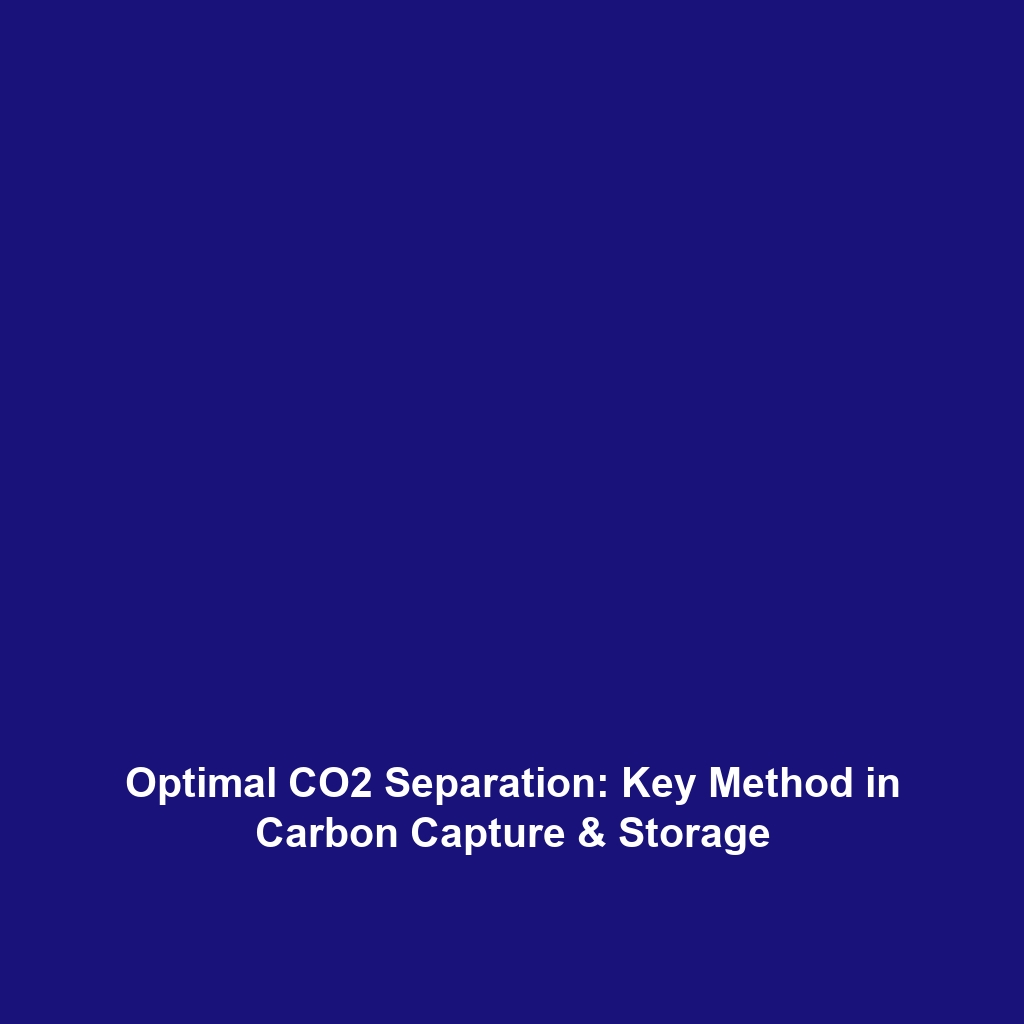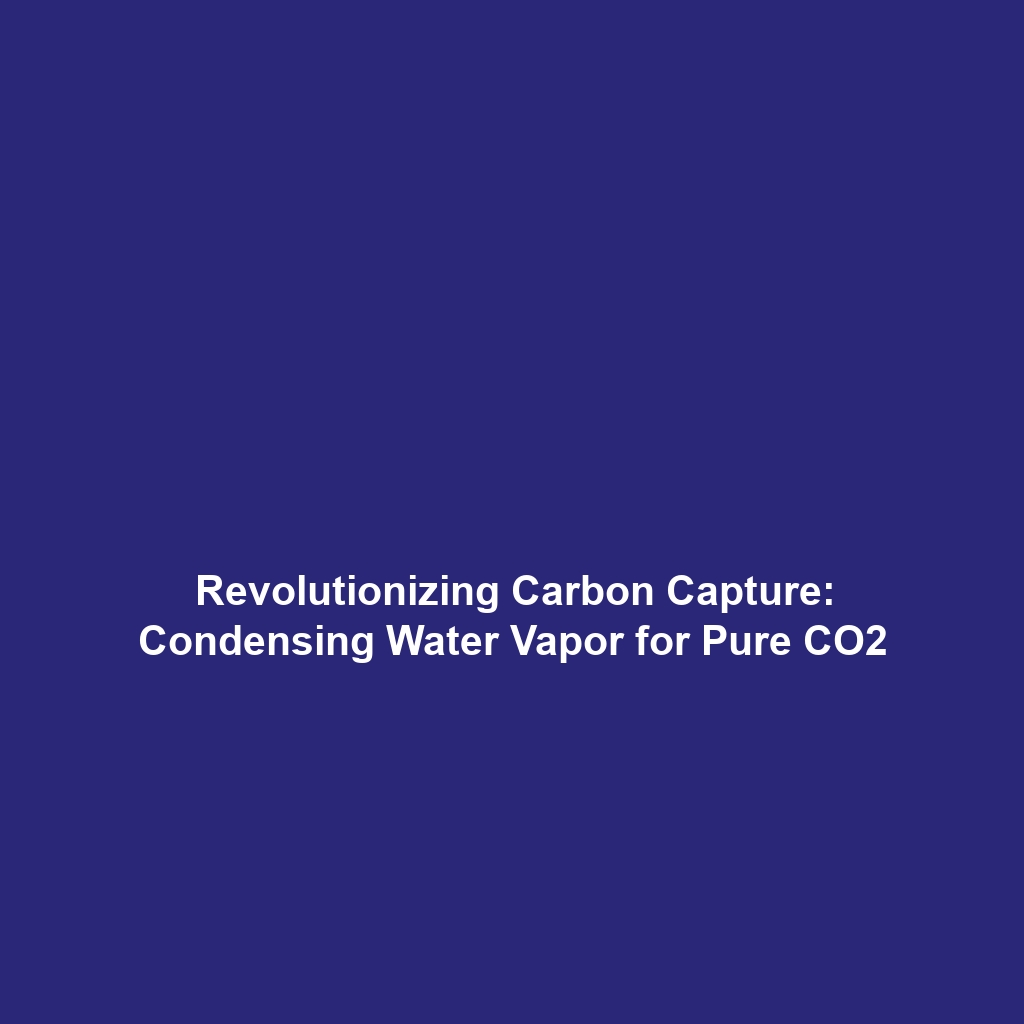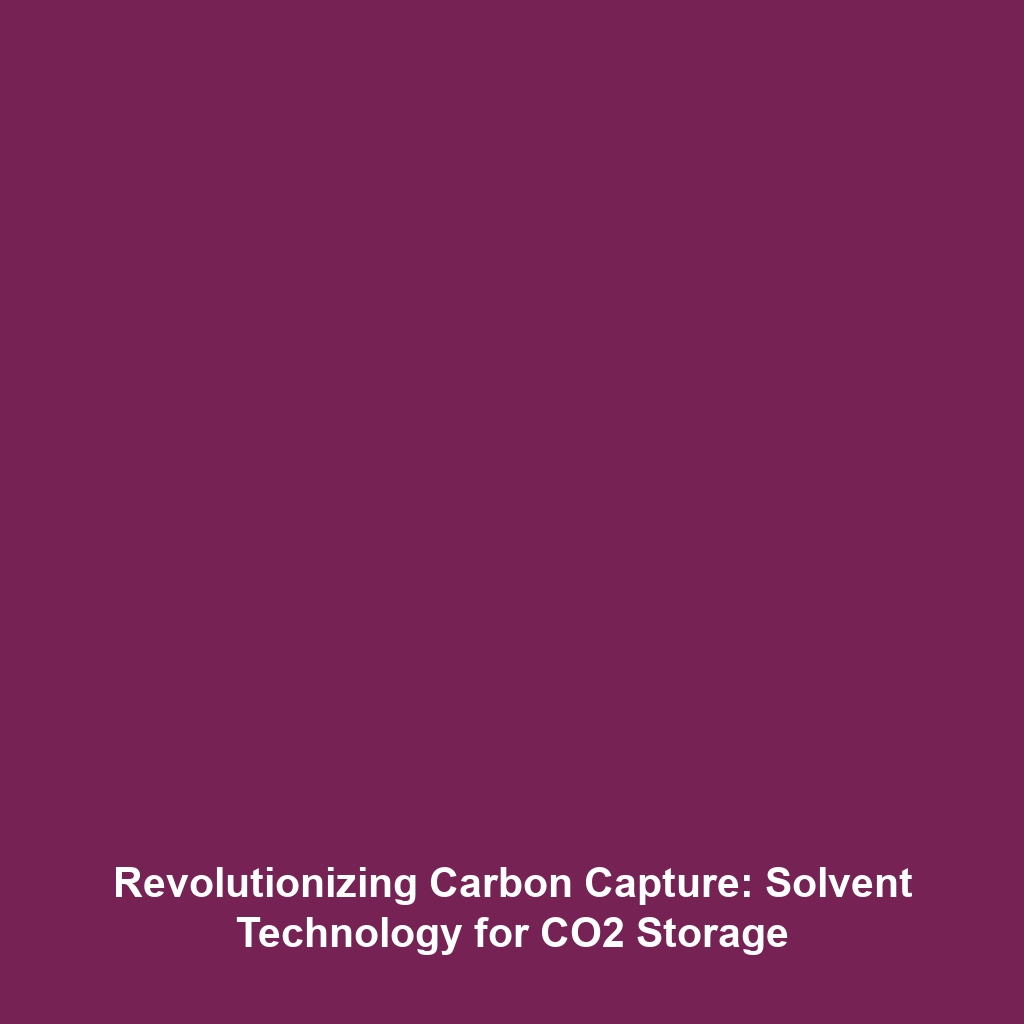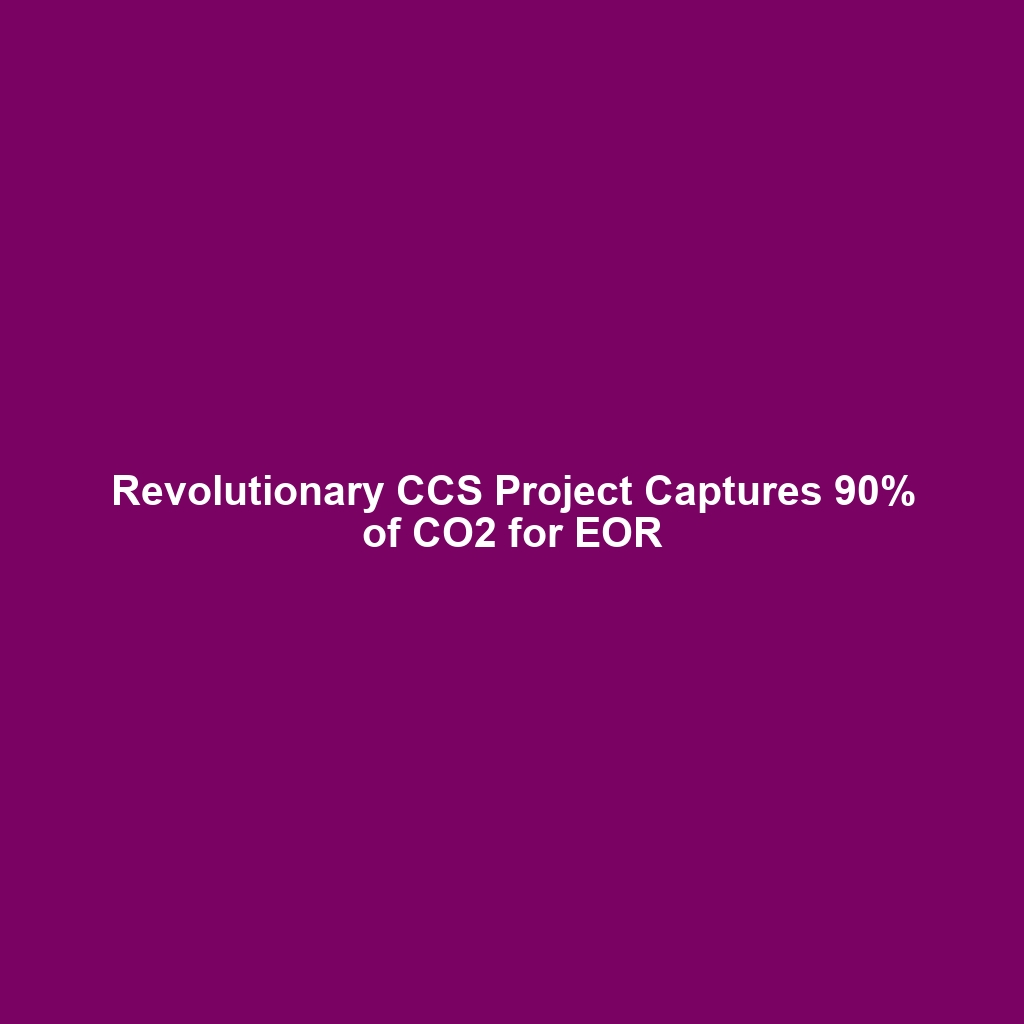Carbon Capture & Storage (CCS): Separating CO2 from Flue Gases
Introduction
Carbon Capture & Storage (CCS) is a critical technological solution aimed at reducing greenhouse gas emissions, particularly carbon dioxide (CO2). This article delves into the most common method of CCS, which involves separating CO2 from flue gases produced during combustion in power plants and industrial processes. With the growing urgency to combat climate change, understanding this method’s significance becomes increasingly important. It holds the potential not only to mitigate the environmental impact of fossil fuel usage but also to facilitate a smoother transition towards cleaner energy production and consumption.
Key Concepts of CO2 Separation from Flue Gases
The process of separating CO2 from flue gases is fundamental to the CCS framework. Here are the key concepts involved:
- Flue Gas Composition: Flue gases primarily consist of nitrogen, carbon dioxide, water vapor, and other pollutant gases. The main aim is to selectively extract CO2 from this mixture.
- Absorption Techniques: The most prevalent technique utilizes chemical solvents to absorb CO2 from flue gases. This absorption process is vital for ensuring efficient capture rates.
- Post-Combustion Capture: This method is executed after fuel combustion and demonstrates significant flexibility, allowing for retrofitting existing power plants without the need for complete overhaul.
Applications and Real-World Uses
The applications of CO2 separation from flue gases extend into several notable sectors:
- Power Generation: The majority of coal and natural gas power plants are utilizing CO2 capture to minimize emissions.
- Industrial Processes: Industries such as cement and steel production, which emit significant amounts of CO2, are implementing this technology to reduce their carbon footprints.
- Enhanced Oil Recovery (EOR): Captured CO2 from flue gases is injected into oil fields to improve oil extraction, showcasing a dual benefit of increased resource recovery and emission reduction.
Current Challenges
Despite its promising potential, several challenges need addressing in the practical application of CO2 separation methods:
- High operational costs associated with capture technology.
- Energy-intensive processes that may offset some environmental benefits.
- Limited infrastructure for large-scale CO2 transportation and storage.
- Public perception and regulatory hurdles concerning safety and environmental impacts.
Future Research and Innovations
Future advancements are critical for enhancing the efficiency and effectiveness of CO2 separation processes. Key areas of focus include:
- Next-Generation Absorbents: Research is directed towards developing more efficient and cost-effective solvents for better CO2 capture.
- Membrane Technologies: Innovations in membrane separation techniques are expected to provide lower energy requirements and increased CO2 capture rates.
- Integration with Renewable Energy: Future systems may increasingly incorporate renewable energy sources to power capture technologies, reducing overall carbon emissions further.
Conclusion
The method of separating CO2 from flue gases represents a cornerstone of Carbon Capture & Storage (CCS) efforts globally. As challenges persist, the focus on research and innovative solutions promises progress in deploying these essential technologies efficiently. By investing in and supporting CCS advancements, we can significantly contribute to climate change mitigation strategies. For further reading on CCS technologies, consider exploring topics related to energy transition and renewable energy integration.





